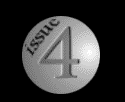|
Adopted from Humphrey Borgart's Sam Spade in The Maltese Falcon,
this gesture consists of a tracing of one's lips with the tip of
one's thumb. The key to the power of this image can be seen only
if we consider a subtle ambiguity. It may not be as simple as
saying that Michel is mimicking Bogart, for Belmondo is self-
consciously playing Michel and Michel is mimicking Bogart. In the
former case we might just see through the image of Michel to the
fact that Bogart is being imitated. We would see Bogart through
Michel. As it stands, however, we are not afforded the kind of
transparency that would result from such a direct reference. When
we look through the image of Michel gesturing we can also see
Belmondo playing at being Bogart. What strikes us is the self-
consciousness of the act; it is not that Michel pretends to be
Bogart, it is rather that Belmondo knows he is pretending to be
Michel pretending to be Bogart. This is given us through his
looking into the camera lens. The look undermines the distinction
between Belmondo and Michel. Thus, when we penetrate the image we
do still see a reference to Bogart; but we are unsure of who it is
that is doing the referring--is it Belmondo or is it Michel? It
is this ambiguity that gives the image a certain arresting density
or thickness.
There is a development here from the Truffautian usage of the
close-up. In Truffaut it was the shattering of our expectations
that gave the image a certain surface quality, preventing our
seeing through it. That which the image refers to is unexpected
and so we must look at it again in order to figure out what
exactly is being referenced. With Godard there is no need for a
contextualized emphasizing of the face since he immediately calls
the referent into question by having Michel talk to the camera. Is
it Belmondo playing at Michel or Michel himself? In the final film
I have chosen to look at we see the focusing on the surface of
the face taken to its logical conclusion and most beautiful
conclusion. In this case, we cannot ask any questions about the
referent at all.
page 3 of 4
 
|

